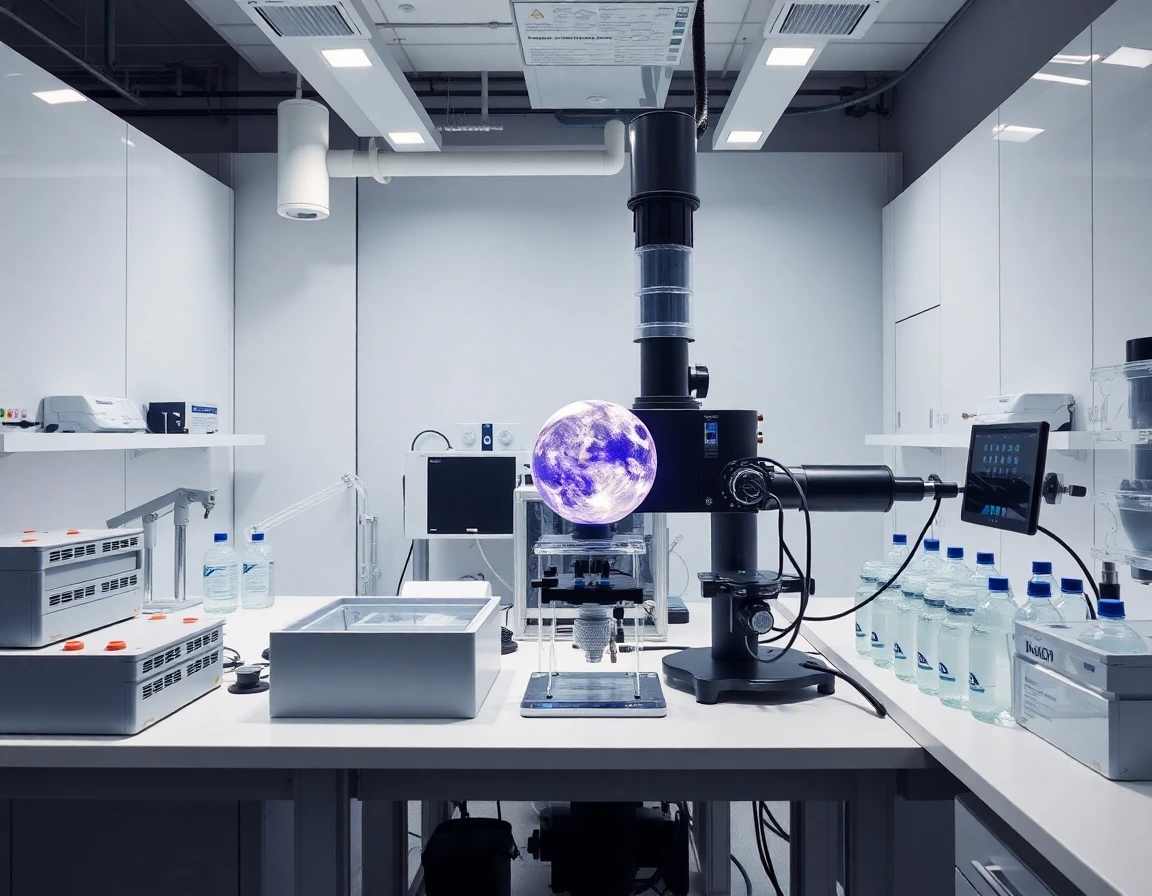In recent years, the race to mine the Moon has accelerated, driven by advancements in technology and a growing interest in extraterrestrial resource utilization. With the potential to extract valuable resources such as helium-3, water ice, and rare earth elements, lunar mining is poised to revolutionize both energy production and manufacturing on Earth. Several key projects are currently underway, marking significant progress in excavation machinery, resource analysis, and international collaboration.
Interlune’s Electric Lunar Excavator Prototype
Interlune, in collaboration with Vermeer, has unveiled an innovative electric lunar excavator prototype designed to extract helium-3 from the Moon’s regolith. This cutting-edge machine boasts an impressive capacity to dig up to 100 metric tons per hour, making it a formidable asset for future lunar mining operations. The excavator is engineered to consume less power and generate minimal dust, addressing two significant challenges associated with traditional excavation methods.
The company plans to deploy a pilot harvesting plant on the Moon by 2029, following a mission set for 2027 to validate helium-3 concentrations. This extraction process involves not only excavation but also sorting, extraction, and separation of materials, with the stripped regolith returned to the lunar surface. Interlune’s efforts signal a broader movement towards utilizing lunar resources for fusion energy, potentially transforming the energy landscape on Earth.
NASA’s PRIME-1 Lunar Drill Technology
NASA’s Polar Resources Ice Mining Experiment 1 (PRIME-1) has achieved a significant milestone in lunar resource extraction through the successful testing of its TRIDENT drill, developed by Honeybee Robotics. This advanced drilling technology combines rotary and percussive methods to gather regolith samples from the lunar surface. The samples are analyzed using the MSOLO mass spectrometer, crucial for characterizing lunar soil strength and composition.
The success of PRIME-1 lays the groundwork for in-situ resource utilization (ISRU), particularly in extracting water ice, which is vital for supporting future lunar habitats and fueling spacecraft. As NASA progresses with its Artemis missions, the insights gained from PRIME-1 are expected to inform the design and operation of lunar bases and facilitate sustainable living on the Moon.
Growing Private and International Lunar Missions
In addition to government initiatives, numerous private companies are advancing lunar exploration through innovative landers and rovers designed for resource assessment. Noteworthy projects include:
- ispace’s Resilience mission, which will deploy a mini-rover to explore lunar resources.
- Astrobotic’s Griffin-1 lander, which will transport a rover from Astrolab for surface analysis.
- Intuitive Machines’ Nova-C lander, conducting surface analysis under NASA’s PRISM program.
These missions are critical for gathering data on lunar surface conditions and resource distribution, facilitating future mining operations.
Global Initiatives and Collaborative Efforts
Lunar mining is not limited to U.S. initiatives; global collaborations are emerging, reflecting a shared interest in lunar resources. China aims to achieve human lunar landings by 2030, with plans for robotic construction of lunar bases in partnership with Russia and other countries for the International Lunar Research Station by 2035.
Australia is leveraging its expertise in terrestrial remote mining to develop innovative technologies for lunar soil collection and oxygen extraction, aiming to send a rover by 2026 as part of NASA’s Artemis missions. Meanwhile, Japan’s recent launch of the Smart Lander for Investigating Moon (SLIM) aims for precision landings in resource-rich areas, further highlighting the global interest in lunar mining.
Economic Potential and Scientific Considerations
The lunar mining market holds substantial economic potential, projected to be a multibillion-dollar industry fueled by resources like helium-3, valued at approximately $2,500 per liter in 2024, alongside water ice and rare earth elements essential for electronics and fuel. However, the pursuit of profit raises important scientific and environmental concerns. Astronomers caution that large-scale mining activities could threaten ongoing research and the preservation of the lunar environment, leading to calls for the development of comprehensive lunar laws and regulations to manage these activities responsibly.
Conclusion
As lunar mining transitions from concept to reality, the advancements in excavation technologies, drilling innovations, and international collaborations underscore the potential of the Moon as a resource hub. With the prospect of commercial operations commencing in the early 2030s, the next decade may witness a new era in both space exploration and energy production. The ongoing efforts by companies like Interlune, NASA, and international partners will not only shape the future of lunar resource utilization but also redefine humanity’s relationship with the cosmos.
With the increasing interest in lunar mining, technologies such as precision accelerometers and advanced sensor modules will play a critical role in ensuring the safety and efficiency of lunar operations. As we look toward the Moon, it becomes evident that the future of resource extraction may not just be grounded on Earth, but could very well extend to our celestial neighbor.
References
-
Plan to harvest helium-3 from lunar surface reaches … (newatlas.com) - 5/27/2025 Interlune unveils a full-scale lunar excavator prototype to mine helium-3, aiming for a pilot plant on the Moon by 2029.
-
NASA’s Lunar Drill Technology Passes Tests on the Moon (www.nasa.gov) - 4/29/2025 NASA’s PRIME-1 (Polar Resources Ice Mining Experiment 1) mission was designed to demonstrate technologies to help scientists better understand lunar resources.
-
Moon Mining Could Net Billions, but Astronomers Say It’s … (www.businessinsider.com) - 2/25/2025 Mining the moon for water, helium-3, and rare earth elements could become a multibillion-dollar industry in the near future, but astronomers warn it risks …
-
Space in 2025: What to Expect (www.seti.org) - 2/11/2025 This year is set to bring many exciting and pivotal moments for space exploration, from private lunar missions to groundbreaking telescopic observations.
-
Lunar Natural Resources: A Tour of a New Horizon (www.gravel2gavel.com) - 9/21/2023 This article digs deeper into the motivations, the methods, the critiques and the legal principles, as public and private sectors contribute to a new horizon …



